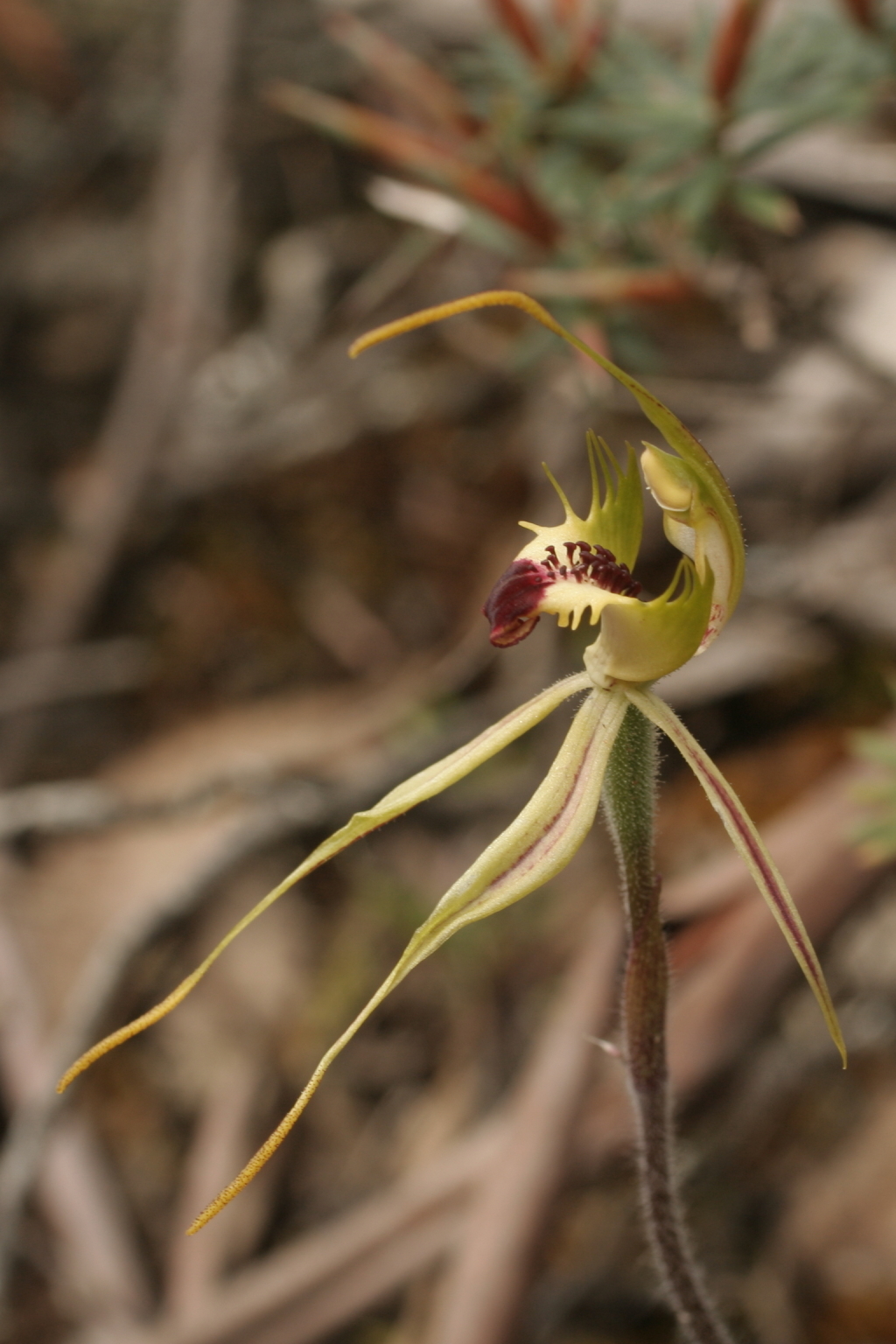Caladenia parva
G.W.Carr Green-comb Spider-orchidFlowering plant 5–15 cm tall. Leaf 3–10 cm long, 5–10 mm wide, often spotted red at base. Flowers 1 or 2; perianth segments 2–4 cm long, green with red central stripe, sepals bearing thickened yellowish brown apical osmophores 3–6 mm long; dorsal sepal erect, 1.5–2 mm wide, tip drooping; lateral sepals projected forwards stiffly, parallel or crossed, asymmetric, dilated at base, 2.5–3 mm wide, tapered to a filiform tail; petals deflexed, 1–2 mm wide. Labellum loosely hinged, curved forward with lateral lobes erect and tip of mid-lobe curved under, prominently 3-lobed, 10–15 mm long and 10–12 mm wide (when flattened), green at base, grading to white then with a dark purple mid-lobe; larger comb-teeth on lateral lobes 2–3 mm long, ending below anther tip, mid-lobe irregularly and broadly toothed or scalloped; lamina calli in 4 sparse rows extending onto base of mid-lobe, linear to narrowly club-shaped, to 2 mm long at base of labellum, shorter and with broader heads towards apex. Flowers Sep.–Nov
MuM, Wim, GleP, VVP, VRiv, MuF, GipP, OtP, WaP, Gold, CVU, GGr, DunT, NIS, EGL, EGU, WPro, HSF, HNF, OtR, VAlp. Also SA. Scattered mostly across southern Victoria in heathy open forests, woodlands and coastal scrubs on well-drained loams.
Caladenia parva is distinguished by its small flowers, early flowering period, small yellowish brown thickened clubs on the sepals.
Caladenia phaeoclavia is treated by some authors as a distinct species, but it appears to fall well within the variation displayed by the earlier described C. parva.
 Spinning
Spinning

